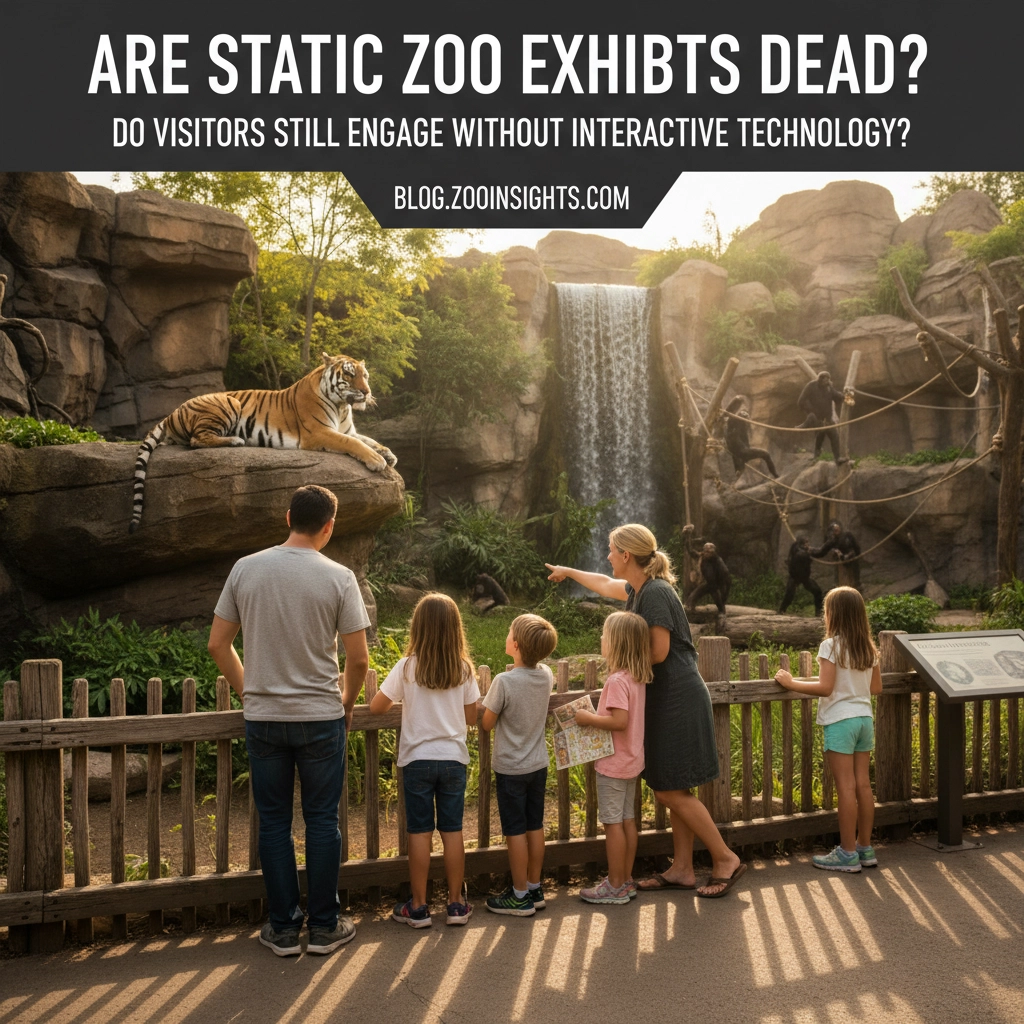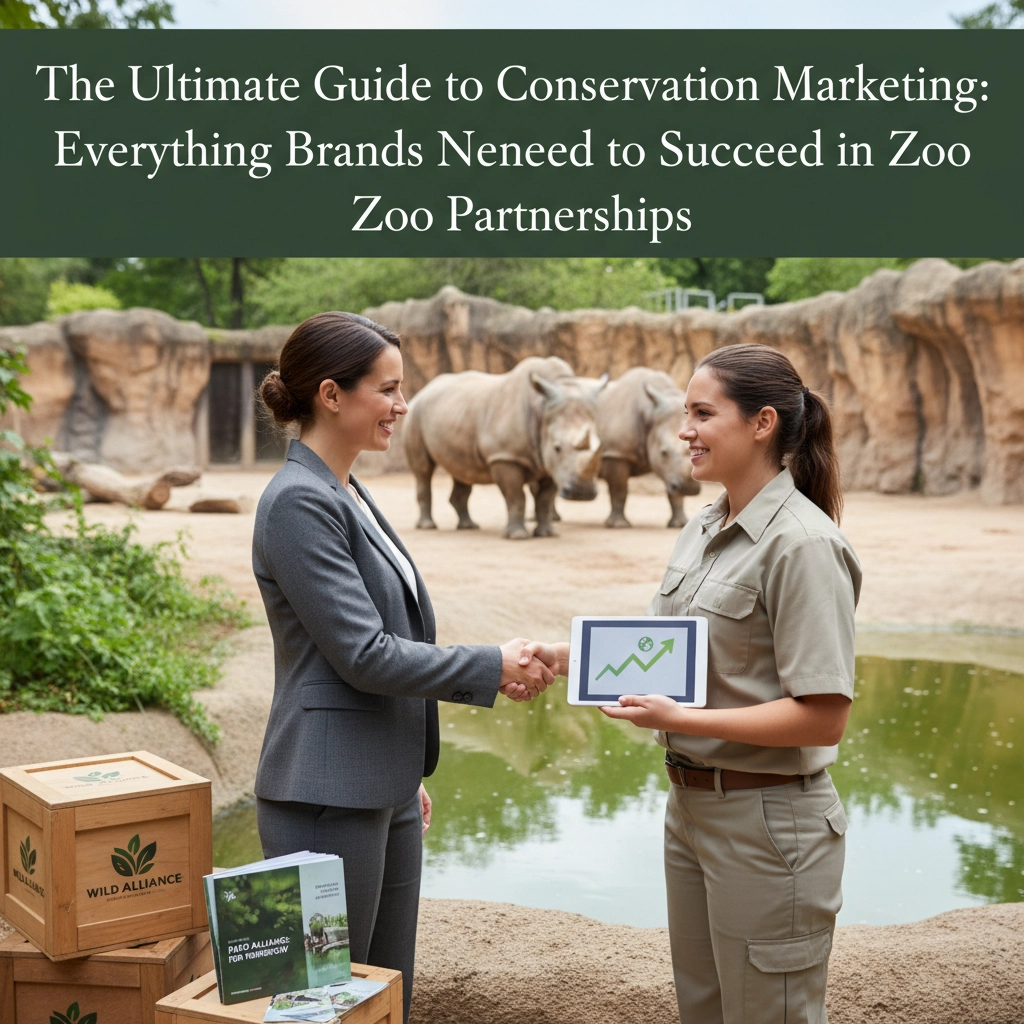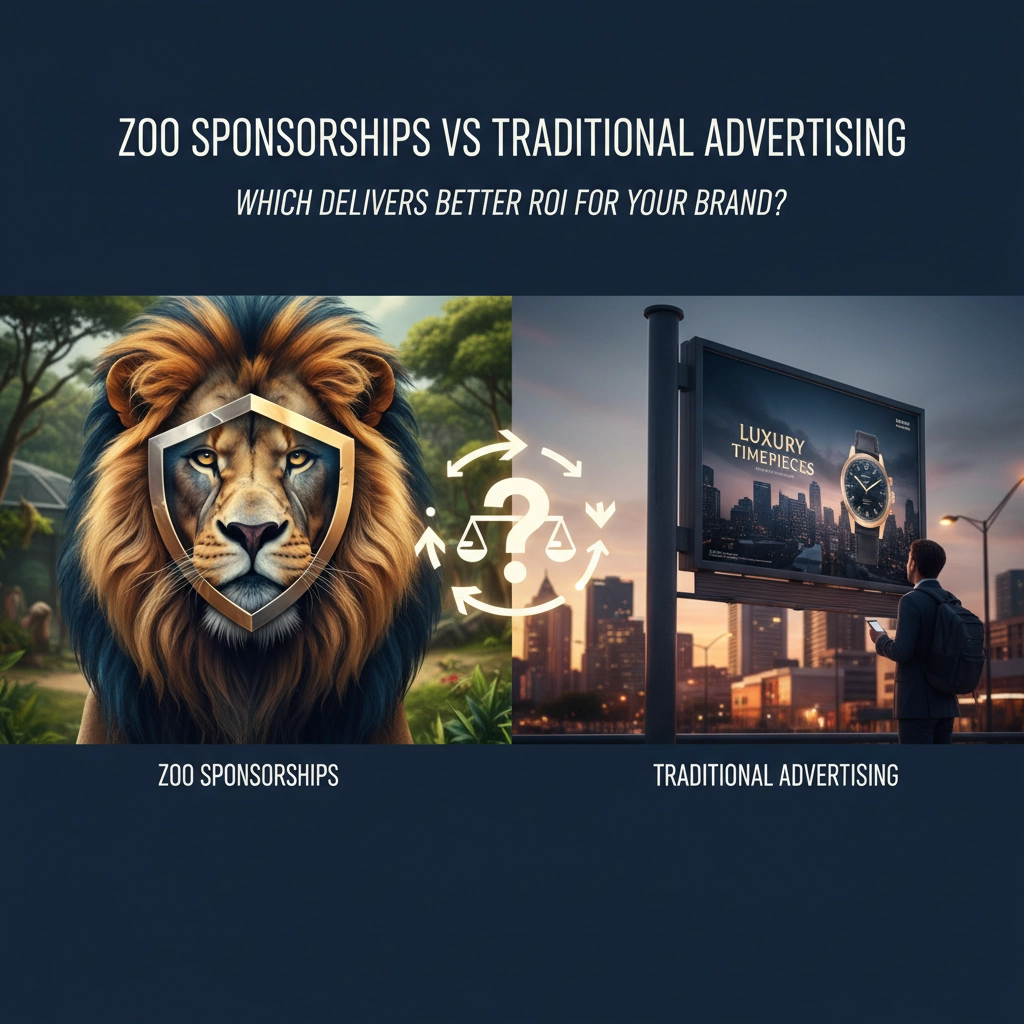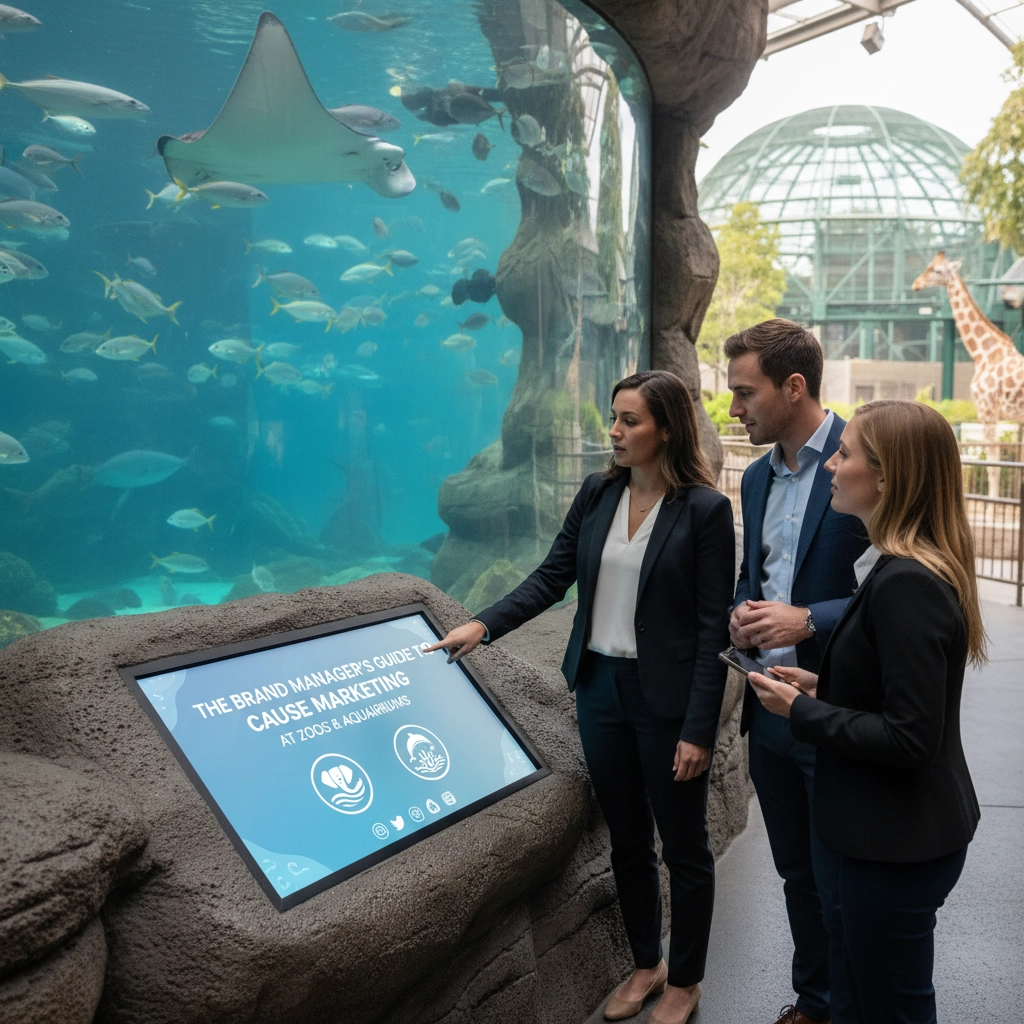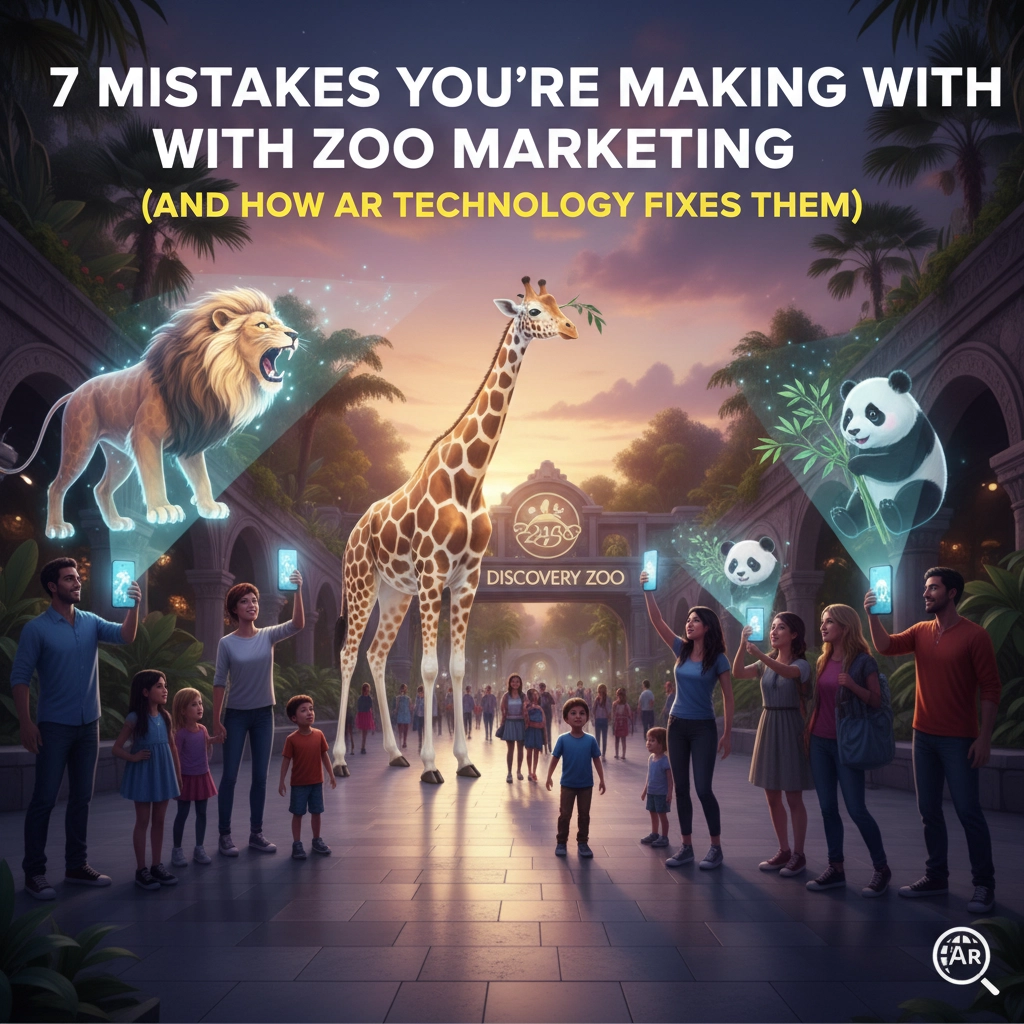The zoo industry faces a critical marketing decision that directly impacts visitor numbers, revenue growth, and long-term sustainability. Should you invest your limited marketing budget in traditional advertising channels or pivot toward strategic brand partnerships? The answer isn't just about following trends: it's about maximizing return on investment while building authentic connections with your target audience.
Recent industry data reveals a compelling truth: brand marketing and partnership strategies outperform traditional performance marketing approaches 80% of the time. This statistic alone should make zoo executives reconsider their marketing allocation, but the deeper analysis reveals even more compelling reasons to embrace collaborative marketing strategies.
Understanding Brand Partnerships in Zoo Marketing
Brand partnerships represent a fundamental shift from solo marketing efforts to collaborative campaigns that leverage multiple organizations' strengths, audiences, and resources. For zoos, this means working with conservation organizations, local businesses, influencers, educational institutions, and even other entertainment venues to create mutually beneficial marketing initiatives.

Core Advantages of Partnership Marketing
Enhanced Credibility and Trust Building
When your zoo partners with respected conservation organizations like the World Wildlife Fund or local environmental groups, you immediately inherit their credibility. Visitors trust recommendations from organizations they already respect, making partnership-based marketing significantly more effective than direct advertising claims.
Cost-Effective Audience Expansion
Partnership marketing allows zoos to access new audiences without bearing the full cost of customer acquisition. When you collaborate with a local school district on educational programs, you're reaching thousands of families through an established, trusted channel. This approach typically costs 60-70% less than traditional advertising while delivering higher engagement rates.
Authentic Content Creation
Modern consumers, especially Gen Z and Millennial families, can easily identify promotional content. Partnership-based marketing creates authentic experiences and content that doesn't feel like advertising. When a popular family blogger shares their genuine zoo experience through a partnership, it resonates far more effectively than a traditional advertisement.
Strategic Partnership Opportunities
Influencer Collaborations
Family lifestyle influencers, conservation advocates, and local personalities can create compelling content that showcases your zoo's unique offerings. These partnerships typically generate 3-5 times more engagement than traditional social media advertising while building long-term brand awareness.
Corporate Sponsorship Programs
Local businesses benefit from community association while providing zoos with marketing resources and cross-promotional opportunities. A restaurant chain sponsoring your zoo's summer concert series creates win-win visibility for both organizations.
Educational Institution Partnerships
Universities and schools provide built-in audiences for conservation education programs, special events, and member benefits. These partnerships often include research collaborations that generate positive media coverage and educational content.
Traditional Advertising: The Conventional Approach
Traditional advertising encompasses the familiar channels that have dominated marketing for decades: television commercials, radio spots, newspaper ads, billboards, and direct mail campaigns. While these methods offer certain advantages, their limitations have become increasingly apparent in today's digital landscape.

Traditional Advertising Benefits
Broad Market Penetration
Television and radio advertising can reach large demographic segments simultaneously, making them effective for general brand awareness campaigns. A well-placed TV commercial during family programming can expose your zoo to thousands of potential visitors within your geographic area.
Complete Message Control
Traditional advertising provides complete authority over creative content, timing, and placement. You control every word, image, and second of exposure, ensuring your message remains consistent across all touchpoints.
Established Measurement Systems
Media buyers understand traditional advertising metrics like gross rating points, reach, and frequency. These familiar measurement systems make it easier to predict and budget for campaign outcomes.
Critical Limitations of Traditional Approaches
Prohibitive Production and Placement Costs
Creating professional television commercials requires significant upfront investment in production, editing, and broadcasting rights. A single 30-second local television spot can cost $1,500-$5,000 per placement, with production costs ranging from $10,000-$50,000 for professional-quality content.
Limited Tracking and Attribution
Traditional advertising offers minimal ability to track campaign effectiveness or attribute visitors directly to specific advertisements. This makes ROI measurement challenging and budget optimization nearly impossible.
Declining Audience Engagement
Consumer behavior has shifted dramatically toward digital consumption and ad-blocking technologies. Traditional advertising interrupts rather than engages, leading to decreased effectiveness and higher cost-per-acquisition.

Comprehensive ROI Comparison
| Marketing Factor | Brand Partnerships | Traditional Advertising |
|---|---|---|
| Initial Investment | Low to Moderate | High |
| Production Costs | Shared with partners | Full responsibility |
| Audience Targeting | Precise, pre-qualified | Broad, less targeted |
| Engagement Quality | High, authentic interaction | Low, one-way communication |
| Measurement Capability | Comprehensive digital tracking | Limited attribution |
| Campaign Flexibility | High adaptability | Fixed commitments |
| Long-term Value | Relationship building | Short-term exposure |
Implementation Strategies for Maximum Impact
Partnership-First Approach
Successful zoo marketing begins with identifying potential partners whose audiences align with your visitor demographics. London Zoo's "Zoo Nights" program exemplifies this strategy by partnering with local lifestyle influencers and event promoters to attract young adults for after-hours experiences. This approach generated 40% higher attendance than traditional advertising campaigns while building a sustainable community of brand advocates.
Step-by-Step Partnership Development:
- Audience Analysis: Identify organizations whose members match your target visitor profiles
- Value Proposition Creation: Develop mutually beneficial partnership proposals that provide clear value to all parties
- Content Collaboration: Create authentic, shareable content that highlights both organizations naturally
- Cross-Promotion: Leverage each partner's communication channels for maximum reach
- Performance Measurement: Track engagement, attendance, and revenue attribution through UTM codes and partner-specific promotions

Digital Integration for Enhanced Tracking
Modern partnership marketing requires sophisticated digital tracking to measure effectiveness and optimize campaigns. Using Google Analytics, Facebook Insights, and custom UTM codes allows zoos to track visitor journeys from initial partner exposure through ticket purchase and repeat visits.
Essential Digital Tools:
- UTM Code Implementation: Track traffic sources and partnership effectiveness
- Retargeting Campaigns: Re-engage visitors who showed interest but haven't purchased tickets
- A/B Testing: Optimize partnership content and calls-to-action
- Conversion Tracking: Measure actual ticket sales and revenue attribution
Hybrid Strategy for Established Zoos
Large, established zoos may benefit from maintaining minimal traditional advertising for broad brand awareness while prioritizing partnership strategies for targeted acquisition and engagement. This approach typically allocates 70-80% of the marketing budget toward partnerships while reserving 20-30% for strategic traditional placements.
Industry Success Stories and Measurable Results
The Columbus Zoo's "Zoo to You" program demonstrates partnership marketing's effectiveness by collaborating with schools, community centers, and corporate events. This initiative generates 35% more revenue per dollar spent compared to traditional advertising while building lasting relationships that drive repeat visits and membership conversions.
San Diego Zoo's influencer partnership program has produced exceptional results, with family lifestyle bloggers generating an average of $8 in ticket revenue for every $1 spent on partnership investments. This 800% ROI significantly outperforms traditional advertising's typical 200-300% return rate.

Strategic Recommendations by Zoo Size and Budget
Small to Medium Zoos (Annual Marketing Budget Under $100,000)
Focus entirely on local partnerships and digital collaboration. Prioritize relationships with schools, community organizations, and micro-influencers who charge minimal fees but offer authentic audience engagement. Avoid traditional advertising entirely in favor of content marketing and partnership-driven social media campaigns.
Large Regional Zoos (Annual Marketing Budget $100,000-$500,000)
Implement a 75/25 split favoring partnerships over traditional advertising. Maintain minimal traditional advertising for broad awareness while investing heavily in influencer partnerships, corporate sponsorships, and collaborative content creation. Use digital tracking extensively to optimize partnership performance.
Major Metropolitan Zoos (Annual Marketing Budget Over $500,000)
Deploy a sophisticated hybrid strategy using partnerships for targeted acquisition and traditional advertising for brand maintenance. Invest in comprehensive digital tracking systems and dedicated partnership management to maximize collaboration effectiveness while maintaining broad market presence.
Measuring Success and Optimizing Performance
Successful zoo marketing requires continuous measurement and optimization. Key performance indicators should include:
- Cost per acquisition through each channel
- Lifetime value of visitors acquired through different methods
- Engagement rates and social sharing metrics
- Revenue attribution to specific partnerships
- Brand sentiment and community perception changes
Regular analysis of these metrics allows zoos to reallocate budget toward the most effective strategies while eliminating underperforming investments.
The Future of Zoo Marketing
The marketing landscape continues evolving toward authentic, relationship-based strategies that provide genuine value to consumers. Zoos that embrace partnership marketing now will build sustainable competitive advantages while developing cost-effective acquisition channels that traditional advertising cannot match.
Brand partnerships offer superior ROI, enhanced credibility, and authentic audience engagement that drives both immediate ticket sales and long-term visitor loyalty. As traditional advertising becomes increasingly expensive and less effective, partnership marketing represents the clear path forward for profitable zoo marketing investment.
The choice between brand partnerships and traditional advertising isn't just about marketing tactics: it's about building sustainable growth strategies that connect your zoo with communities, create authentic experiences, and deliver measurable returns on your marketing investment.
Ready to transform your zoo's marketing strategy? Contact Zoo Media at zoomedia.us to discover how our advertising expertise can maximize your marketing ROI through strategic partnership development.



